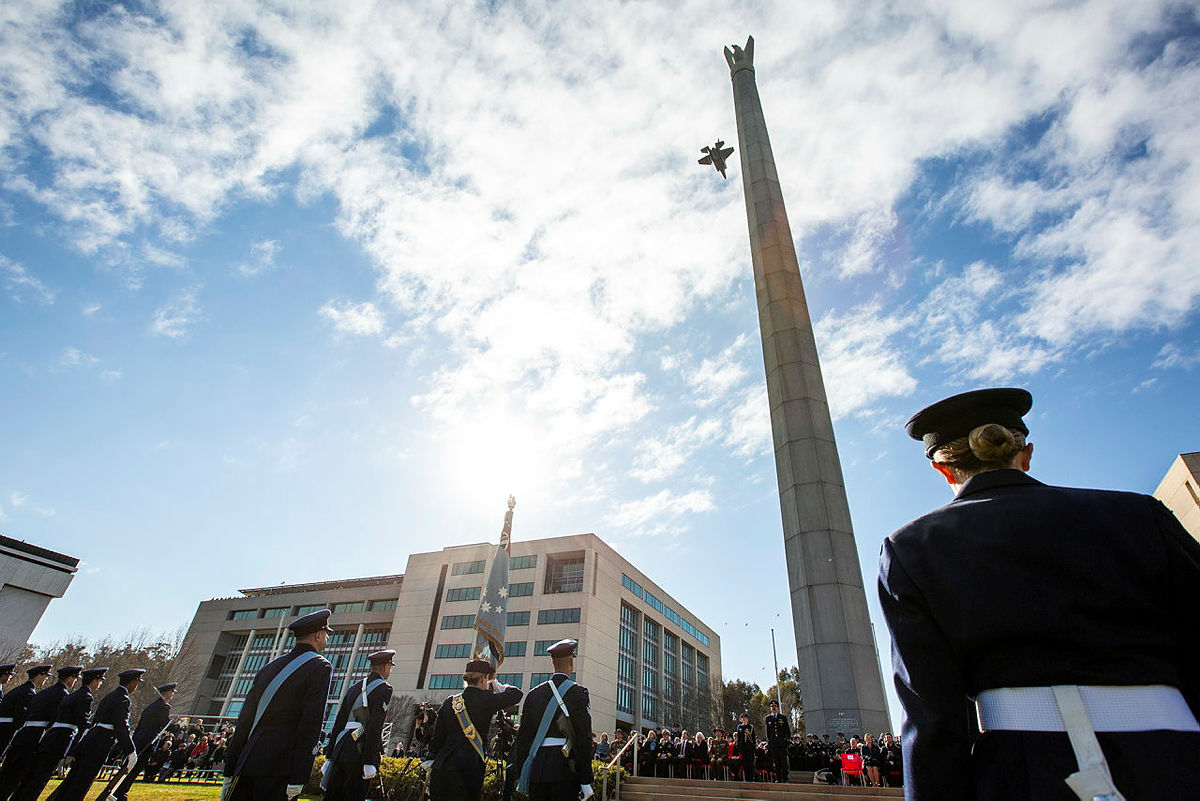
Last month, I looked at Defence’s growing external workforce, in particular its 6,500 or so contractors, who provide ‘skills that would normally be maintained in the Australian Public Service or Australian Defence Force … to perform day-to-day duties of Defence’ (here and here).
I did this not to advocate a particular balance between Defence’s internal and external workforces but to highlight the coming challenge for the defence organisation and industry. Under the government’s funding model, Defence’s total acquisition and sustainment budget will grow from $23.3 billion in the 2019–20 financial year to $52.9 billion by the end of the decade. Even if only half of that is spent in Australia, that’s $26 billion a year for domestic industry to swallow. And Defence will still need people to manage the projects spending the other half overseas.
Delivery of the government’s elephantine capability program over the next decade will test Australia’s workforce, whatever model or combination of models Defence relies upon. We are all going to have to think creatively about how to generate the required workforce.
Certainly, increasing the supply of workers is crucial, and government and industry measures to increase the number of graduates in science, technology, engineering and maths will be a key part of the solution. But Defence also needs to think creatively about retaining and using the workforce it already has. The department’s new transformation strategy recognises this, stating that the defence enterprise needs to evolve the concept of an integrated workforce ‘to ensure that we are harnessing the full spectrum of skills, experience, insight and diverse thinking that is available’.
Here’s my own attempt at thinking a little differently. Like much innovation, it’s simply taking a model that has been used successfully in one area and applying it in a new one. In fact, the model is close at hand in the form of the Australian Defence Force’s total workforce system. The TWS acknowledges that Defence ‘needs a contemporary, flexible and agile workforce environment’ and establishes a spectrum of service categories under which individuals can perform different kinds of work under different conditions.
Under service category 3, for example, the ADF can draw on reservists for ‘a short to medium term contribution … to capability’ or for ‘provision of specific skills and qualifications suited to a particular task, which are not readily available within the Permanent force’.
What this means is that ADF personnel who have left full-time service and remain on the books as reservists can return to perform time-limited tasks. They are paid at a daily rate equivalent to the amount earned by their regular-service peers. A colonel is paid around $550 per day—a fraction of what an equivalent contractor would get. Areas in the ADF can bid for an allowance of reserve days and can then spend them on this pool of labour.
The benefit of such an arrangement is that it avoids much of the administrative overhead of tendering for services while having much lower costs than standing external panel arrangements. And it draws on people who know Defence and have demonstrated skills that it needs. Those reservists are now a key part of the ADF’s workforce model.
Many staff who leave the Australian public service have valuable skills—demonstrated by the fact that a large number of them continue to work as contractors with Defence through various service providers. Why couldn’t Defence establish an APS reserve to make use of these people without paying contractor rates?
Such a scheme would mean APS staff who have left full-time employment could voluntarily remain on the books as a panel of trusted, skilled workers who would be available for short-term tasks, or longer-term tasks on a part-time basis, and be paid daily rates equivalent to what their full-time colleagues earn.
It’s likely that this kind of reserve arrangement would appeal to many APS staff, such as those transitioning to retirement and seeking a more flexible working arrangement or those wanting some income while they pursue a sea- or tree-change. All of these types of people are found in the ADF reserve. Many would prefer to work directly for the Commonwealth rather than for private contractors even if the remuneration is lower.
There a number of tasks these workers could do beyond acting as short-term fill-ins for permanent desk officers. They could, for example, develop project or planning documents and conduct reviews or red-teaming exercises. They could also supply surge capacity in the lead-up to a large exercise or ADF activity.
There are other potential benefits. Currently, senior ADF reservists on short-term tasks can work closely with junior officers, developing and mentoring them. There will likely be similar benefits in an APS scheme in which a retired high-level officer works closely with junior staff.
Like any services panel, participants would be subject to assessment to ensure quality, and robust arrangements would need to be in place to avoid nepotism.
No doubt there will be those who will say it can’t work within current APS strictures. Revisions to legislation may be required. But with Defence’s transformation strategy replete with references to agility, adaption and innovation, it’s time to start pushing the boundaries. Of course, if the model is successful, there’s no reason why it couldn’t be expanded beyond Defence to bring the benefits of cross-portfolio pollination to the government sector.
This is just a small part of the solution. It will only provide individuals; it won’t deliver entirely outsourced functions. But the scale of the workforce challenge is so big, we are going to need many different solutions. And if it saves $1,500 a day for some of the hundreds of thousands of days of work currently performed by contractors, it will be a bonus for taxpayers too.

